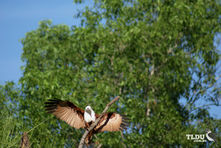
Shoppers Feedback:
Jan 17, 2017
Hello Ros,
I have now paid the invoice, but I would like to write to you just to say a big THANK YOU for getting me the Penguin!
The ChatterMate Penguin became a nice memory for me when I was in New Zealand, and I am so greatful to you for arranging so that I could have it! :-)
Thank you so much!!!!!!!!!!!
Regards,
Malin
Hi Ros,
Many thanks for your very kind email. I really appreciate your prompt reply!
I appreciate your advice regarding the decorations and customs. These are a gift for my daughter’s exchange student family so when she returns home on the weekend I will show her and see if she loves them as much as I do!
Thanks so very much again - I am truly grateful for your kind assistance.
Kind Regards
Bernadette
Ros,
Thanks again for the great customer service. It's a refreshing change!
Best regards,
Trevor
Hey Roz,
Thank you for your emails. Just loved my first order. The cute little Aussie bush critters are going to be used for an office Christmas decoration. My colleagues also liked them and talked about making an order to your site. I'll send you a photo when completed.
I'll be ordering more to send to my daughter's host family in America.
Fabulous service from you.
Kind regards,
Michelle
Thankyou. Order arrived today. One very happy grandson with his new beastly binoculars.
Regards,
Irene
- Home
- Wild Wonders
- Shop
- Aromas of Australia
- Australian Made
- Books
- Book Marks
- Christmas Decoration Sale
- Christmas Decorations
- Clocks
- Drink Holders
- Garden & Outdoor
- Gift Wrapping & Cards
- Home & Giftware
- Jewellery
- Keyrings
- New Products
- Pencils & Pen Holders
- Photo Frames
- Plush Toys
- Plush with Sound
- Sheepskin Rugs
- Stationery
- Stone Carvings
- Toys & Games
- Travel Goods
- Wedding
- Wild Figurines
- Wildlife Safety Products
- Wind Chimes
- Wine Charms
- View All Products
- Wildlife
- Australiana
- Explore
- Contact Us
Brahminy Kite

Quick Facts
| Length: | 50 cm |
| Height: | - |
| Weight: | 530 grams |
| Colour: | White head and breast. Body rich chestnut brown |
| Habitat: | Mangrove swamps and estuaries. Occassionally seen over forests and along rivers |
| Food: | Carrion (dead animals), fish and insects |
| Predators: | - |
| Status: | Secure |
The Brahminy Kite is one of the medium-sized birds of prey (raptor), with a white head and breast. The rest of its body is a striking chestnut brown. The very tip of the tail is white. The wings are broad with dark 'fingered' wing tips and short tail. The legs are short and not feathered, the eye is dark and the lemon yellow coloured bill is strongly hooked. It sails on level wings along shorelines and mudflats.
Juvenille Brahminy kites may be confused with the Whistling Kite and the Little Eagle. First-year juveniles may also be mistaken for Ospreys, but are dark underneath rather than white.
The Brahminy Kite is widespread across northern Australia, mainly along the coastline from Western Australia to northern New South Wales and is more common in the north of its range.
The Brahminy Kite is a bird of the coast particularly in the mangrove swamps and estuaries. It is sometimes seen over forests and along rivers.
The Brahminy Kite feeds on carrion (dead animals), insects and fish. It swoops low over water, the ground or tree tops and snatches live prey or carrion from the surface. It also steals from fish-hunting birds, snatching their prey in flight. It is known to bother other birds such as gulls, Whistling Kites, Osprey and the Australian White Ibis.
Being scavengers, they benefit from waste at tips, on roadsides and in harbours.
The nest of the Brahminy Kite is built in living trees near water, often mangrove trees. The nest is large and made from sticks, seaweed or driftwood and lined with a variety of materials such as lichens, bones, seaweed and even paper. Both parents incubate the eggs and the young are fed bill to bill with small pieces of food.
Last Updated: Sunday 14th July, 2013
BirdLife Australia - www.birdlife.org.au
BUSH e-TELEGRAPH
Signup for our monthly newsletter the "e-Telegraph"
Quick Links
Home | The Beginning | About The Land Down Under | Wild Wonders | Advertise on Wild Wonders | Christmas Decoration Sale | Christmas Tree Decorations | Drink Holders | Plush with Sound | Stone Carvings | Wildlife Wine Charms | Freebies | Australian Wildlife | Help Our Wildlife | Australiana | Photo of the Month | Explore The Land Down Under | Contact Us | Legal Notices

